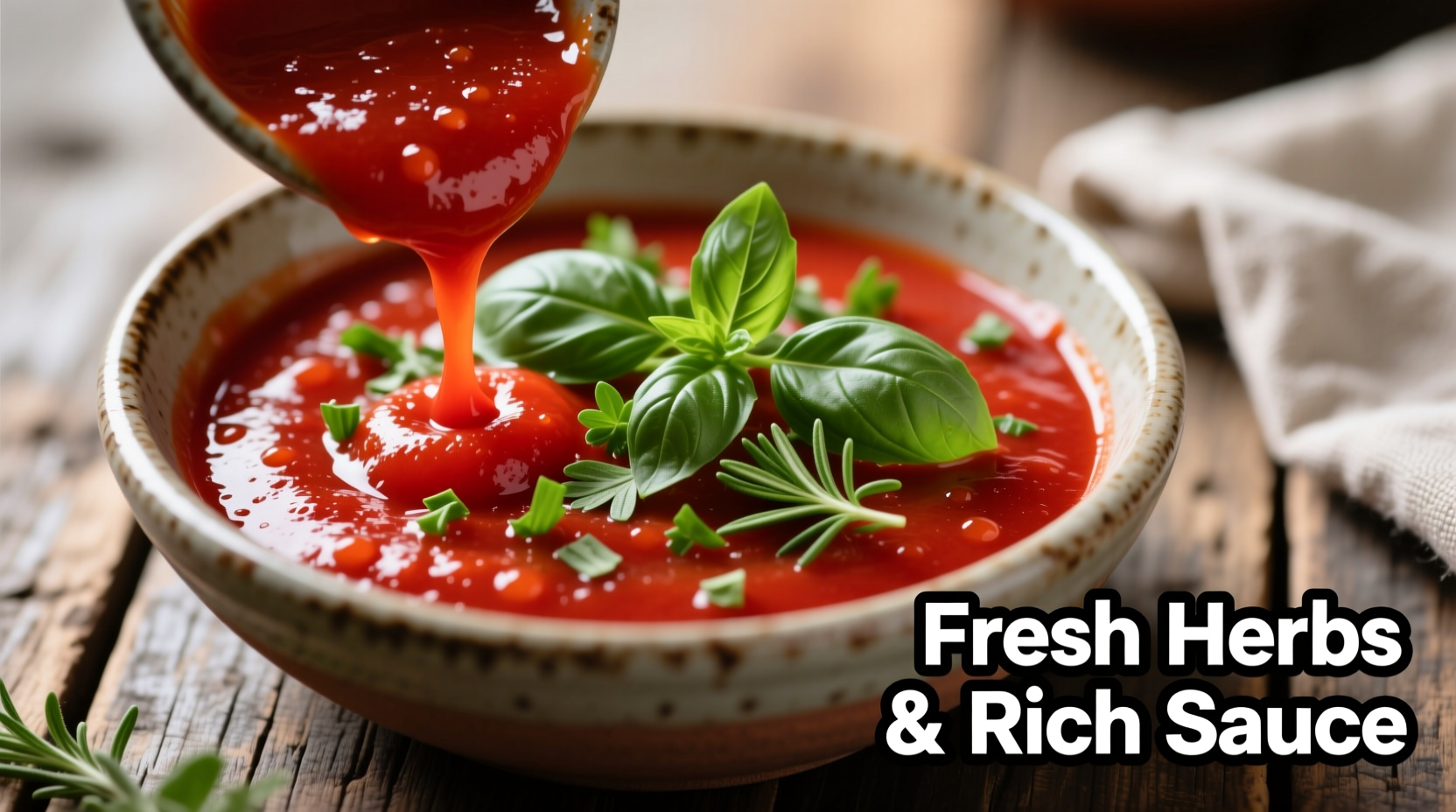Discover how to make a vibrant tomato sauce with fresh herbs that transforms simple ingredients into a culinary masterpiece. This guide reveals professional chef techniques for maximizing flavor extraction, proper herb timing, and avoiding common mistakes that ruin texture and taste. You'll learn exactly when to add each herb for optimal flavor development, how to balance acidity naturally, and storage methods that preserve freshness for up to two weeks.
Why Fresh Herb Timing Makes All the Difference
Most home cooks make the critical error of adding all herbs at the beginning of cooking, which destroys delicate flavor compounds. According to USDA Food Safety Research, volatile aromatic compounds in fresh herbs begin degrading at temperatures above 140°F (60°C). Basil's essential oils evaporate within 10 minutes of simmering, while oregano and thyme can withstand longer cooking.
| Herb | Optimal Addition Time | Flavor Impact |
|---|---|---|
| Basil | Last 2-3 minutes of cooking | Preserved sweet, peppery notes |
| Oregano | Middle of cooking (15-20 min mark) | Balanced earthy, floral notes |
| Thyme | Beginning of cooking | Full earthy complexity development |
| Parsley | After removing from heat | Fresh, grassy finish |
The Science Behind Flavor Development
Understanding the chemical interaction between tomatoes and herbs elevates your sauce from ordinary to exceptional. The USDA National Agricultural Library confirms that lycopene in tomatoes becomes more bioavailable when cooked with healthy fats like olive oil. This process enhances both nutritional value and flavor absorption.
Professional chefs use a two-stage herb incorporation method:
- Foundation herbs (thyme, rosemary): Added early to infuse base flavors
- Finishing herbs (basil, parsley): Added at the end to preserve volatile compounds

Step-by-Step Preparation Guide
Follow this precise method for consistently perfect results:
Essential Ingredients
- 2 lbs (900g) ripe Roma tomatoes, cored and quartered
- 3 tbsp extra-virgin olive oil
- 4 garlic cloves, thinly sliced
- 1 small onion, finely diced
- 1 tsp sugar (optional, balances acidity)
- 8 fresh basil leaves
- 4 sprigs fresh oregano
- 2 sprigs fresh thyme
- Sea salt and freshly ground black pepper to taste
Cooking Process
- Sauté aromatics: Heat olive oil over medium-low. Add onions and garlic, cooking until translucent (5-7 minutes) without browning
- Add tomatoes: Increase heat to medium-high, add tomatoes with their juices and sugar. Bring to a gentle boil
- Initial simmer: Reduce heat to maintain a gentle simmer. Add thyme and oregano. Cook uncovered for 20 minutes, stirring occasionally
- Final herb incorporation: Remove thyme stems. Tear basil leaves and stir in with 2 minutes remaining
- Finishing: Remove from heat, stir in remaining basil. Season with salt and pepper
Avoiding Common Mistakes
Even experienced cooks make these critical errors when preparing tomato sauce with fresh herbs:
- Overcooking basil: Destroys delicate flavor compounds - add in final minutes
- Using dried herbs as substitutes: Dried oregano is 3x more potent than fresh - adjust accordingly
- Adding herbs to boiling liquid: Causes rapid flavor evaporation - maintain gentle simmer
- Over-blending: Creates a foamy texture - pulse briefly if smoothing is needed
Storage and Usage Guidelines
Proper storage maintains flavor integrity. The FDA Food Code recommends refrigerating cooked tomato products within 2 hours. For optimal freshness:
- Cool sauce completely before storing
- Use airtight containers with minimal headspace
- Refrigerate for up to 5 days or freeze for 3 months
- Never store in metal containers (reacts with acidity)
Customizing Your Tomato Sauce
Adapt this base recipe for different applications:
- Pasta sauce: Add 1/4 cup reserved pasta water when combining
- Pizza sauce: Simmer 10 minutes longer for thicker consistency
- Seafood pairing: Add a pinch of red pepper flakes with the garlic
- Vegan option: Substitute honey for sugar to balance acidity











 浙公网安备
33010002000092号
浙公网安备
33010002000092号 浙B2-20120091-4
浙B2-20120091-4